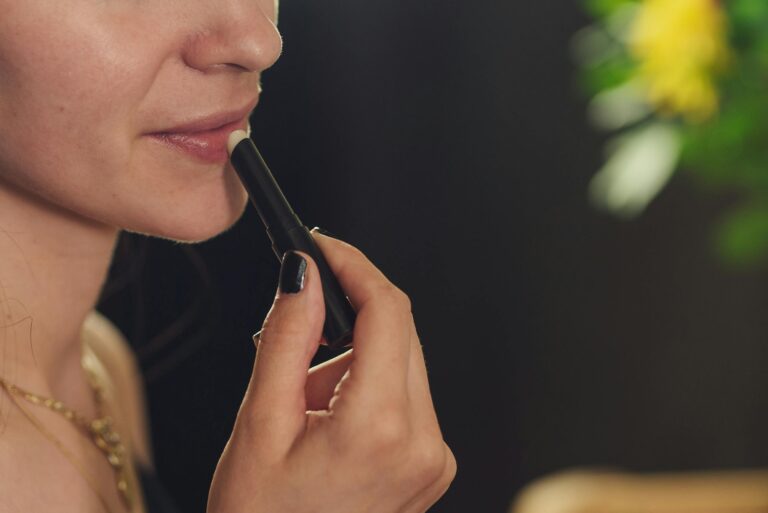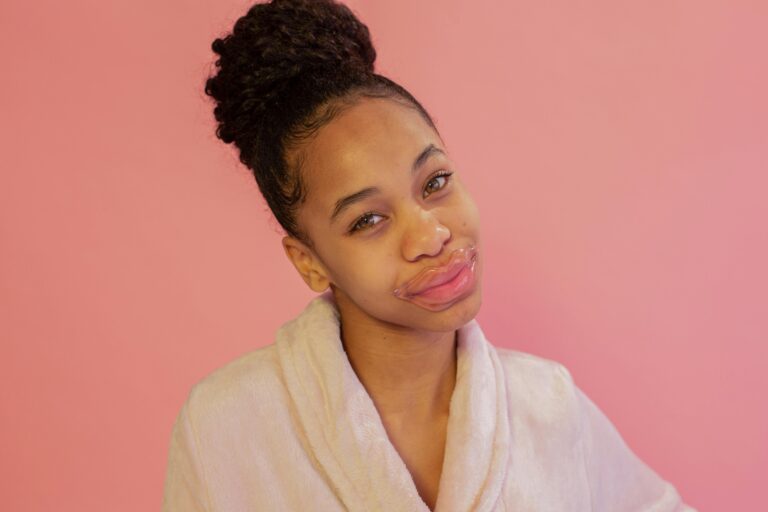Lipstick – that small, colorful tube of magic that has been adorning lips for centuries. But, have you ever wondered about its intriguing history, the ancient roots, and the transformative journey it has undertaken over the ages?
In this comprehensive exploration, we’ll trace the origins of lipstick, understanding its cultural significance, and unveiling the evolution that has led to the dazzling array of shades you see today.
I. Ancient Origins of Lipstick
Mesopotamian and Egyptian Lip Cosmetics
The story of lipstick begins in ancient Mesopotamia and Egypt. These civilizations were pioneers in lip cosmetics, using natural pigments to create vibrant lip colors. Their lipstick-making techniques laid the foundation for future innovations.
The history of lipstick can be traced back to ancient Mesopotamia and Egypt. These civilizations used natural pigments like red ochre and crushed gemstones to create vibrant lip colors. These early lip cosmetics were not only used for beauty but also held spiritual and cultural significance.
Greek and Roman Lip Paint Traditions
In ancient Greece and Rome, lipstick was a symbol of social status. Wealthy individuals used lip paint made from ingredients like red wine, mulberries, and crushed insects. The colors reflected one’s position in society.
The Greeks and Romans further contributed to the history of lipstick. Lip paint became a symbol of social status in these societies, and the ingredients for lip color included red wine, mulberries, and even crushed insects. The shade of one’s lip color often indicated their place in the social hierarchy.
Early Ingredients and Symbolism
Throughout ancient times, lipstick ingredients varied from region to region. These lip cosmetics held not only aesthetic value but also carried symbolism associated with power, seduction, and protection.
Ingredients used in lipstick varied across ancient civilizations. For instance, ancient Egyptians favored carmine, while the Greeks opted for mulberry juice. Lipstick wasn’t just about aesthetics; it also symbolized various attributes, such as power, seduction, and protection against evil spirits.
II. Medieval and Renaissance Lipstick
Medieval Europe: Lipstick as a Sign of Social Status
In medieval Europe, lipstick was predominantly reserved for the upper class. Lip color indicated one’s nobility, and the ingredients were exotic, including crushed insects and plant-based pigments.
Medieval Europe introduced lipstick as a symbol of social status. Nobility often flaunted lip color made from exotic ingredients like crushed insects and plant-based pigments. The richer and more vibrant the lip color, the higher one’s status.
Renaissance Advancements in Lip Color and Cosmetics
The Renaissance era witnessed significant advancements in cosmetics, including the creation of lip paint. New shades and ingredients come outd, reflecting the changing beauty ideals of the time.
The Renaissance era marked a turning point in the history of lipstick and cosmetics. Innovations in lip color led to the come outnce of new shades and ingredients, reflecting the changing beauty ideals and fashion trends of the period.
III. The Evolution of Lipstick in the 19th and Early 20th Centuries
Victorian Era and the Emergence of Commercial Lip Preparations
The Victorian era saw a shift from homemade lip cosmetics to commercial lip preparations. Lipstick became more accessible, but it was still considered risqué in certain circles.
The Victorian era witnessed a transition from homemade lip cosmetics to commercial lip preparations. While lipstick became more accessible to a broader audience, it was still seen as daring in some social circles.
The Impact of World War I on Lipstick Popularity
World War I played a surprising role in the popularity of lipstick. With a shortage of cosmetics, lipstick became a symbol of resilience and a morale booster during the war.
World War I had an unexpected impact on lipstick. With a shortage of cosmetics, lipstick became a symbol of resilience and a morale booster during the war. This shift in perception contributed to the rising popularity of lipstick.
IV. The Golden Age of Hollywood and Lipstick
Influence of Hollywood Stars on Lipstick Trends
The Golden Age of Hollywood brought unprecedented attention to lipstick. Iconic stars like Marilyn Monroe and Audrey Hepburn influenced lipstick trends, making it a must-have beauty item.
The Golden Age of Hollywood catapulted lipstick into the limelight. Iconic stars like Marilyn Monroe and Audrey Hepburn became beauty icons, shaping lipstick trends and turning it into a must-have beauty accessory.
Iconic Lipstick Shades and Their Cultural Impact
During this era, specific lipstick shades gained fame and cultural significance. For example, the classic red lipstick embodied the allure and confidence of the era’s leading ladies.
Certain lipstick shades from this era became iconic, symbolizing the glamour and confidence of leading ladies. Red lipstick, in particular, embodied the allure and boldness of the Golden Age of Hollywood.
V. Lipstick in the Modern Era
Post-World War II Lipstick Innovations
After World War II, lipstick underwent significant innovations. Vibrant shades, long-lasting formulas, and new packaging transformed lipstick into a modern beauty essential.
Post-World War II, lipstick saw a wave of innovations. Vibrant shades, long-lasting formulas, and new packaging made lipstick a modern beauty essential, catering to the changing beauty ideals of the time.
The Feminist Movement and Changing Perceptions of Lipstick
The feminist movement in the 20th century challenged traditional beauty norms, including the use of lipstick. Women embraced lipstick as a symbol of empowerment and self-expression.
The feminist movement of the 20th century challenged traditional beauty norms, including the use of lipstick. Women redefined lipstick as a symbol of empowerment and self-expression, breaking free from historical constraints.
VI. Lipstick Today: Trends, Sustainability, and Inclusivity
Current Lipstick Trends and Popular Shades
Today, lipstick trends encompass a wide range of shades, from bold, matte reds to subtle nudes. The beauty industry constantly introduces new products to cater to diverse preferences.
Modern lipstick trends span a wide spectrum of shades, from bold matte reds to subtle nudes. The beauty industry continually introduces new products to cater to diverse preferences and changing fashion trends.
Sustainable and Cruelty-Free Lipstick Options
As environmental awareness grows, there is an increasing demand for sustainable and cruelty-free lipstick options. Brands are incorporating eco-friendly practices into their products.
With growing environmental awareness, there’s a rising demand for sustainable and cruelty-free lipstick options. Many brands are now incorporating eco-friendly practices into their lipstick products.
The Push for Inclusivity in the Beauty Industry
The beauty industry is increasingly focusing on inclusivity, offering lipstick shades that complement a broad range of skin tones. This positive shift promotes beauty diversity and representation.
Inclusivity is a central focus of the beauty industry, with brands offering lipstick shades that complement a diverse range of skin tones. This positive shift promotes beauty diversity and representation, allowing more individuals to embrace lipstick.
Conclusion
In the captivating journey through the history of lipstick, we’ve uncovered the origins, symbolism, and remarkable transformation of this iconic cosmetic. From its early days in Mesopotamia to its present-day diversity and inclusivity, lipstick has advanced as a symbol of beauty, status, resilience, and empowerment. It remains a timeless accessory, empowering individuals to express themselves through a spectrum of colors.
Frequently Asked Questions (FAQs)
1. What is the history of lipstick?
The history of lipstick traces back to ancient civilizations like Mesopotamia and Egypt, where natural pigments were used for lip cosmetics.
2. When did lipstick first appear?
Lipstick’s origins date back to ancient times, with early use in Mesopotamia and Egypt.
3. What is the ancient way of making lipstick?
Ancient lipstick was made using natural pigments such as red ochre, carmine, mulberries, and crushed gemstones.
4. What was the first lipstick color?
The color of the first lipsticks varied across cultures and included shades like red ochre and carmine.
5. What does lipstick symbolize?
Throughout history, lipstick has symbolized various attributes such as power, seduction, protection, and social status.
6. What was lipstick originally made for?
Lipstick was originally made for both aesthetic and cultural purposes, including beauty enhancement, spiritual significance, and social status.
7. Did you know facts about lipstick?
Sure! Did you know that in ancient times, lipstick ingredients included crushed insects? They were used to create vibrant lip colors.
8. Who was the person who invented lipstick?
The invention of lipstick can’t be attributed to a single person; it advanced over time across various civilizations.
9. What is the forbidden lipstick?
The “forbidden lipstick” refers to certain lipstick shades that were once considered daring and risqué, especially in the Victorian era.
10. Why put a finger in the mouth after applying lipstick?
Putting a finger in the mouth after applying lipstick is a trick to prevent lipstick from getting on your teeth.
11. Can lipstick contain DNA?
In forensic investigations, lipstick can potentially contain traces of DNA if it has been directly applied to an item.
12. What did Egyptians use for lipstick?
Egyptians used a variety of substances for lipstick, including carmine (a red pigment), iodine, and henna.



